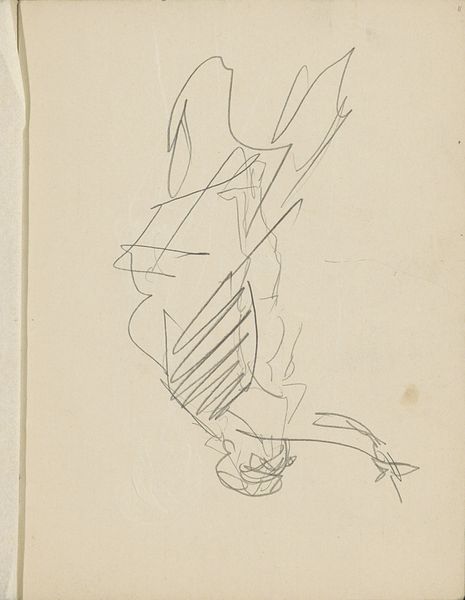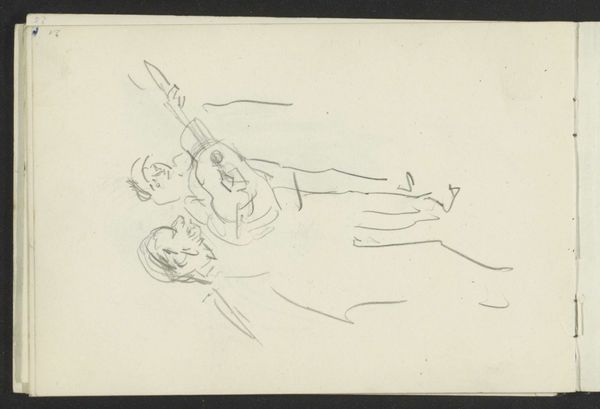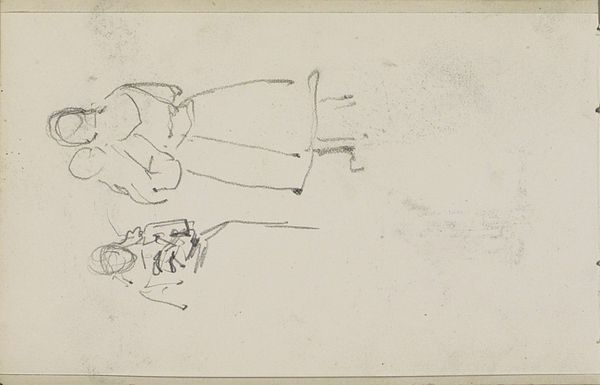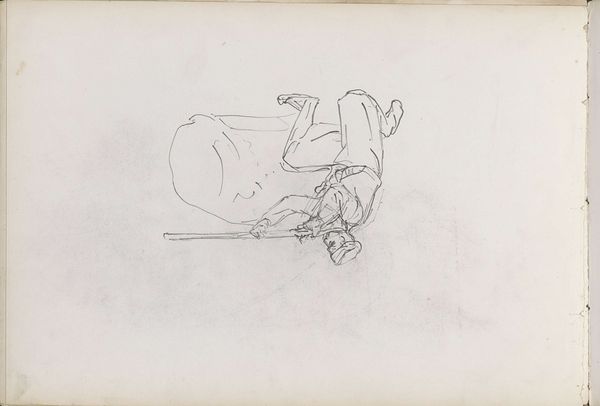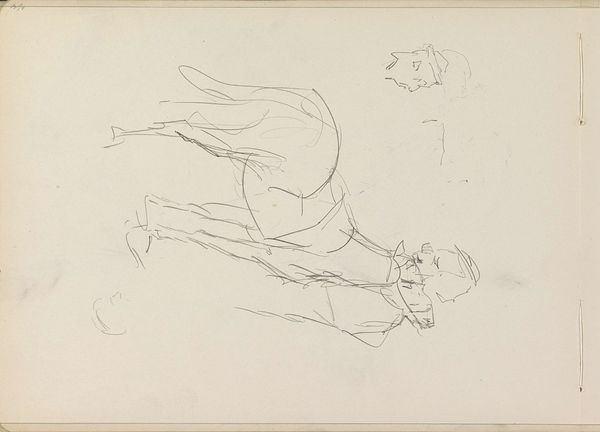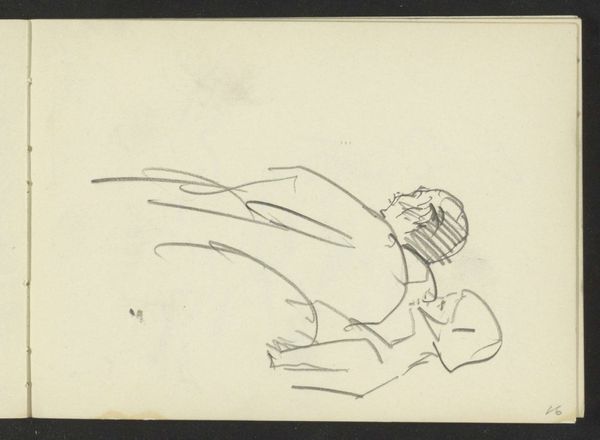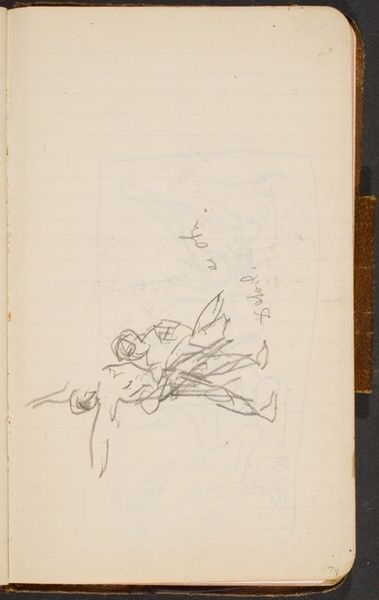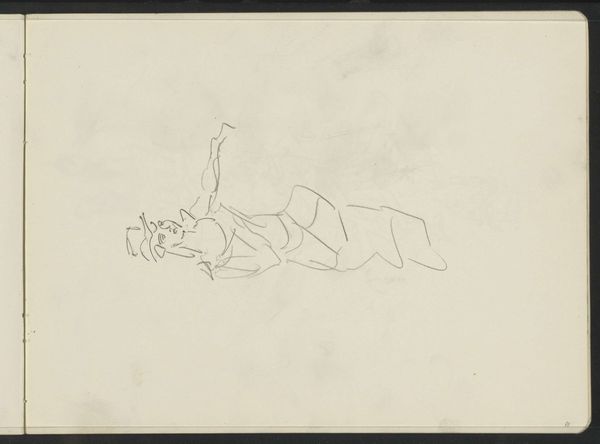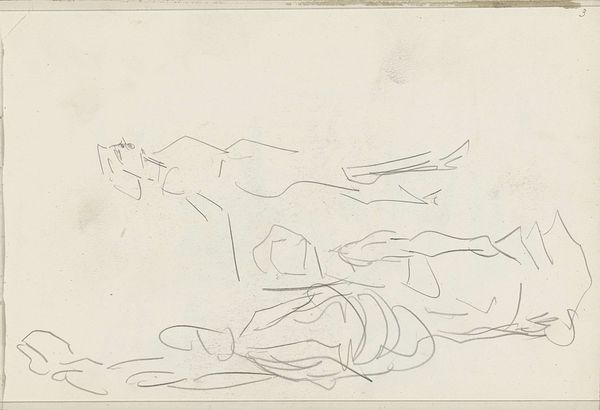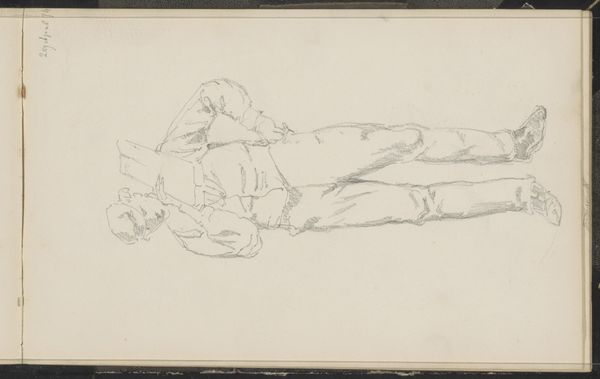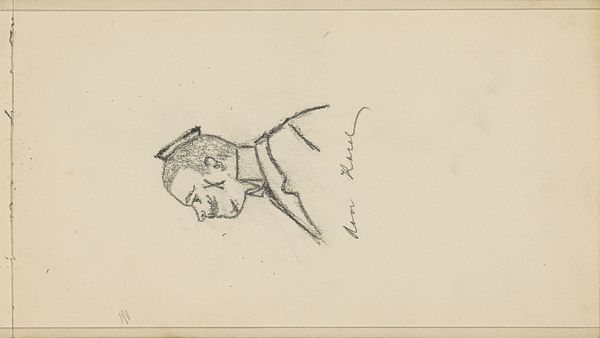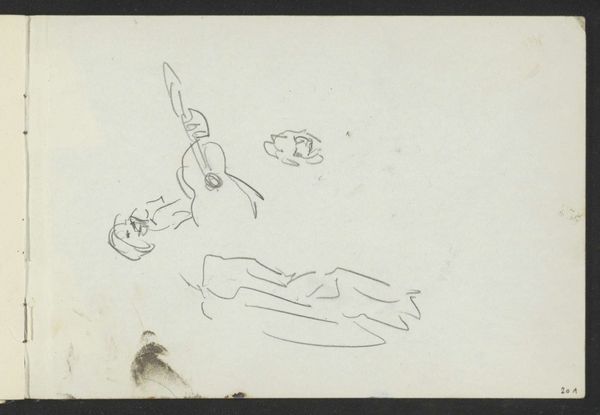
drawing, ink, pen
#
drawing
#
figuration
#
ink
#
child
#
pen
#
genre-painting
Copyright: Rijks Museum: Open Domain
Editor: So, this is "Two Children Sitting on a Log," made with pen and ink sometime between 1841 and 1853 by Johannes Tavenraat. It's at the Rijksmuseum. It feels unfinished somehow, yet the children are well-defined. What do you make of this work? Curator: I see here a study in archetypes, a kind of pastoral "every-child". The log itself, seemingly uprooted, acts as a plinth, elevating these children. In that sense it asks us to consider, what does childhood symbolize? Innocence? Potential? Or something more transient? Editor: Transient? Curator: Note how lightly the ink is laid. This isn't meant to be a lasting monument, but an observation, fleeting as childhood itself. Look at their clothing; does it evoke a particular time for you, or a universal rural existence? Editor: It feels timeless, really. Their clothes are simple, suggesting a humble life, but their hats add a distinct, playful element. I wonder, were hats a more prominent cultural symbol back then? Curator: Absolutely. Hats signaled status, trade, and even personality. Here, they feel intentionally oversized, a subtle suggestion of role-playing, a child's imagination at work. Consider how the minimal linework adds to that sense of dreaminess. This suggests more than meets the eye. The rough log anchors the piece but also elevates children to the same level of respect. Editor: I see what you mean. So, it's less about capturing these specific children, and more about exploring the broader concept of childhood. I appreciate this focus on symbolism—I hadn't quite looked at it that way. Curator: Indeed, images whisper to us across generations, if only we listen for their echoes.
Comments
No comments
Be the first to comment and join the conversation on the ultimate creative platform.
